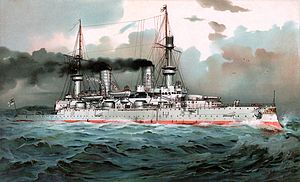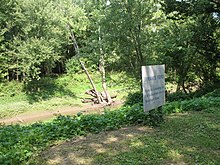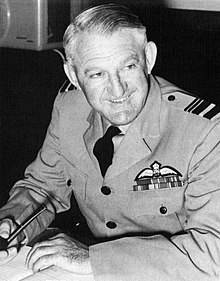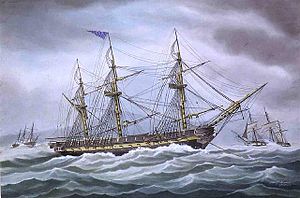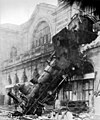Portal:History
The History Portal
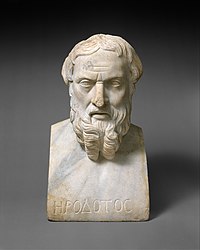
Herodotus (c. 484 BC – c. 425 BC) is often
considered the "father of history"
History (derived from Ancient Greek ἱστορία (historía) 'inquiry; knowledge acquired by investigation') is the systematic study and documentation of the human past.
The period of events before the invention of writing systems is considered prehistory. "History" is an umbrella term comprising past events as well as the memory, discovery, collection, organization, presentation, and interpretation of these events. Historians seek knowledge of the past using historical sources such as written documents, oral accounts, art and material artifacts, and ecological markers. History is incomplete and still has debatable mysteries.
History is an academic discipline which uses a narrative to describe, examine, question, and analyze past events, and investigate their patterns of cause and effect. Historians debate which narrative best explains an event, as well as the significance of different causes and effects. Historians debate the nature of history as an end in itself, and its usefulness in giving perspective on the problems of the present.
Stories common to a particular culture, but not supported by external sources (such as the tales surrounding King Arthur), are usually classified as cultural heritage or legends. History differs from myth in that it is supported by verifiable evidence. However, ancient cultural influences have helped create variant interpretations of the nature of history, which have evolved over the centuries and continue to change today. The modern study of history is wide-ranging, and includes the study of specific regions and certain topical or thematic elements of historical investigation. History is taught as a part of primary and secondary education, and the academic study of history is a major discipline in universities.
Herodotus, a 5th-century BC Greek historian, is often considered the "father of history", as one of the first historians in the Western tradition, though he has been criticized as the "father of lies". Along with his contemporary Thucydides, he helped form the foundations for the modern study of past events and societies. Their works continue to be read today, and the gap between the culture-focused Herodotus and the military-focused Thucydides remains a point of contention or approach in modern historical writing. In East Asia, a state chronicle, the Spring and Autumn Annals, was reputed to date from as early as 722 BC, though only 2nd-century BC texts have survived. (Full article...)
-

HMS Royal Sovereign (1891) was the first pre-dreadnought battleship of the Royal Navy.
Pre-dreadnought battleships were sea-going battleships built from the mid- to late- 1880s to the early 1900s. Their designs were conceived before the appearance of HMS Dreadnought in 1906 and their classification as "pre-dreadnought" is retrospectively applied. In their day, they were simply known as "battleships" or else more rank-specific terms such as "first-class battleship" and so forth. The pre-dreadnought battleships were the pre-eminent warships of their time and replaced the ironclad battleships of the 1870s and 1880s.
In contrast to the multifarious development of ironclads in preceding decades, the 1890s saw navies worldwide start to build battleships to a common design as dozens of ships essentially followed the design of the Royal Navy's Majestic class. Built from steel, protected by compound, nickel steel or case-hardened steel armour, pre-dreadnought battleships were driven by coal-fired boilers powering compound reciprocating steam engines which turned underwater screws. These ships distinctively carried a main battery of very heavy guns upon the weather deck, in large rotating mounts either fully or partially armoured over, and supported by one or more secondary batteries of lighter weapons on broadside. (Full article...) -
SMS Kaiser Wilhelm II ("His Majesty's Ship Emperor William II") was the second ship of the Kaiser Friedrich III class of pre-dreadnought battleships. She was built at the Imperial Dockyard in Wilhelmshaven and launched on 14 September 1897. The ship was commissioned into the fleet as its flagship on 13 February 1900. Kaiser Wilhelm II was armed with a main battery of four 24-centimeter (9.45 in) guns in two twin turrets. She was powered by triple expansion engines that delivered a top speed of 17.5 knots (32.4 km/h; 20.1 mph).
Kaiser Wilhelm II served as the flagship of the Active Battle Fleet until 1906, participating in numerous fleet training exercises and visits to foreign ports. She was replaced as flagship by the new battleship SMS Deutschland. After the new dreadnought battleships began entering service in 1908, Kaiser Wilhelm II was decommissioned and put into reserve. She was reactivated in 1910 for training ship duties in the Baltic, but was again taken out of service in 1912. (Full article...) -
The Battle of Byram's Ford (also known as the Battle of Big Blue River and the Battle of the Blue) was fought on October 22 and 23, 1864, in Missouri during Price's Raid, a campaign of the American Civil War. With the Confederate States of America collapsing, Major General Sterling Price of the Confederate States Army conducted an invasion of the state of Missouri in late 1864. Union forces led Price to abandon goals of capturing the cities of St. Louis and Jefferson City, and he turned west with his army towards Kansas City.
On October 22, Price's army found itself caught between two Union forces, commanded by Major Generals James G. Blunt and Alfred Pleasonton. Part of Price's force conducted a delaying action against Pleasonton in the Second Battle of Independence, while the division of Brigadier General Joseph O. Shelby broke Blunt's line at Byram's Ford on the Big Blue River by crossing at an unguarded ford above the Union defenses. The Union defenders were forced to retreat to the Kansas state line, and the 2nd Kansas State Militia Infantry Regiment was caught at the Mockbee Farm and overwhelmed. Meanwhile, Pleasonton's men pushed Price's rear guard across the Big Blue in the Second Battle of Independence. (Full article...) -
The Battle of Kaiapit was an action fought in 1943 between Australian and Japanese forces in New Guinea during the Markham and Ramu Valley – Finisterre Range campaign of World War II. Following the landings at Nadzab and at Lae, the Allies attempted to exploit their success with an advance into the upper Markham Valley, starting with Kaiapit. The Japanese intended to use Kaiapit to threaten the Allied position at Nadzab, and to create a diversion to allow the Japanese garrison at Lae time to escape.
The Australian 2/6th Independent Company flew in to the Markham Valley from Port Moresby in 13 USAAF C-47 Dakotas, making a difficult landing on a rough airstrip. Unaware that a much larger Japanese force was also headed for Kaiapit, the company attacked the village on 19 September to secure the area so that it could be developed into an airfield. The company then held it against a strong counter-attack. During two days of fighting the Australians defeated a larger Japanese force while suffering relatively few losses. (Full article...) -
Robert Howard Hodgkin FSA (24 April 1877 – 28 June 1951), who went by Robin, was an English historian. Hodgkin taught at the Queen's College, Oxford, from 1900 to 1937 and served as its provost from 1937 until 1946. He was particularly known for his 1935 work, A History of the Anglo-Saxons, and for his 1949 book, Six Centuries of an Oxford College.
Born at the family house Benwell Dene in Newcastle upon Tyne, Hodgkin was a son of the banker and historian Thomas Hodgkin, and was part of a so-called "Quaker dynasty" with many accomplished relatives. From 1896 to 1899, he attended Balliol College, Oxford, graduating with first-class honours in the Final School of Modern History. The following year, he volunteered to serve in the Northumberland Fusiliers, rejoining them during the First World War, which ultimately led to him being forced to leave the Society of Friends. (Full article...) -
The Koli Point action, during 3–12 November 1942, was an engagement between U.S. Marine Corps and U.S. Army forces and Imperial Japanese Army forces around Koli Point on Guadalcanal during the Guadalcanal campaign. The U.S. forces were under the overall command of Major General Alexander Vandegrift, while the Japanese forces were under the overall command of Lieutenant General Harukichi Hyakutake.
U.S. Marines from the 7th Marine Regiment and U.S. Army soldiers from the 164th Infantry Regiment under the tactical command of William H. Rupertus and Edmund B. Sebree, attacked a concentration of Japanese Army troops, most of whom belonged to the 230th Infantry Regiment, commanded by Toshinari Shōji. Shōji's troops had marched to the Koli Point area after the failed Japanese assaults on U.S. defenses during the Battle for Henderson Field in late October 1942. (Full article...) -
Theodore II Doukas Laskaris or Ducas Lascaris (Greek: Θεόδωρος Δούκας Λάσκαρις, romanized: Theodōros Doukas Laskaris; November 1221/1222 – 16 August 1258) was Emperor of Nicaea from 1254 to 1258. He was the only child of Emperor John III Doukas Vatatzes and Empress Irene Laskarina. His mother was the eldest daughter of Theodore I Laskaris, who had established the Empire of Nicaea as a successor state to the Byzantine Empire in Asia Minor after the crusaders captured the Byzantine capital, Constantinople, during the Fourth Crusade in 1204. Theodore received an excellent education from two renowned scholars, Nikephoros Blemmydes and George Akropolites. He made friends with young intellectuals, especially with a page of low birth, George Mouzalon. Theodore began to write treatises on theological, historical and philosophical themes in his youth.
Emperor John III arranged for Theodore to marry Elena Asenina in 1235, to forge an alliance with her father, Ivan Asen II, Emperor of Bulgaria, against the Latin Empire of Constantinople. According to Theodore himself, their marriage was happy, and they had five or six children. From 1241, Theodore acted as his father's lieutenant in Asia Minor during his frequent military campaigns in the Balkan Peninsula. From around 1242, he was his father's co-ruler, but was not crowned as co-emperor. During this period, his relationship with some prominent aristocrats, particularly Theodore Philes and Michael Palaiologos, grew tense. (Full article...) -
The Anglo-Zanzibar War was a military conflict fought between the United Kingdom and the Sultanate of Zanzibar on 27 August 1896. The conflict lasted between 38 and 45 minutes, marking it as the shortest recorded war in history. The immediate cause of the war was the suspicious death of the pro-British Sultan Hamad bin Thuwaini on 25 August 1896 and the subsequent succession of Sultan Khalid bin Barghash. The British authorities preferred Hamoud bin Mohammed, who was more favourable to British interests, as sultan. The agreement of 14 June 1890, instituting a British protectorate over Zanzibar, specified that a candidate for accession to the sultanate should obtain the permission of the British consul; Khalid had not fulfilled this requirement. The British considered this a casus belli and sent an ultimatum to Khalid demanding that he order his forces to stand down and leave the palace. In response, Khalid called up his palace guard and barricaded himself inside the palace.
The ultimatum expired at 09:00 local time on 27 August, by which time the British had gathered two cruisers, three gunboats, 150 marines and sailors, and 900 Zanzibaris in the harbour area. The Royal Navy contingent were under the command of Rear-Admiral Harry Rawson and the pro-Anglo Zanzibaris were commanded by Brigadier-General Lloyd Mathews of the Zanzibar army (who was also the First Minister of Zanzibar). Around 2,800 Zanzibaris defended the palace; most were recruited from the civilian population, but they also included the sultan's palace guard and several hundred of his servants and slaves. The defenders had several artillery pieces and machine guns, which were set in front of the palace sighted at the British ships. A bombardment, opened at 09:02, set the palace on fire and disabled the defending artillery. A small naval action took place, with the British sinking the Zanzibari royal yacht HHS Glasgow and two smaller vessels. Some shots were also fired ineffectually at the pro-British Zanzibari troops as they approached the palace. The flag at the palace was shot down and fire ceased at 09:46. (Full article...) -
T1 was a seagoing torpedo boat that was operated by the Royal Yugoslav Navy between 1921 and 1941. Originally 76 T, a 250t-class torpedo boat of the Austro-Hungarian Navy built in 1914, she was armed with two 66 mm (2.6 in) guns and four 450 mm (17.7 in) torpedo tubes, and could carry 10–12 naval mines. She saw active service during World War I, performing convoy, escort and minesweeping tasks, anti-submarine operations and shore bombardment missions. In 1917 the suffixes of all Austro-Hungarian torpedo boats were removed, and thereafter she was referred to as 76. She was part of the escort force for the Austro-Hungarian dreadnought Szent István during the action that resulted in the sinking of that ship by Italian torpedo boats in June 1918.
Following Austria-Hungary's defeat later that year, 76 was allocated to the Navy of the Kingdom of Serbs, Croats and Slovenes, which became the Royal Yugoslav Navy, and was renamed T1. At the time, she and seven other 250t-class boats were the only modern sea-going vessels of the fledgling maritime force. During the interwar period, T1 and the rest of the navy were involved in training exercises, but activity was limited by reduced naval budgets. The boat was captured by the Italians during the German-led Axis invasion of Yugoslavia in April 1941. After her main armament was modernised, she served with the Royal Italian Navy under her Yugoslav designation. Having escaped capture by German forces following the Italian capitulation in September 1943, she was returned to the Royal Yugoslav Navy-in-exile. She was commissioned by the Yugoslav Navy after World War II, and after a refit which included replacement of her armament, she served as Golešnica until 1955. She was sunk as a target in Žanjica Bay near the western entrance to the Bay of Kotor, and is now a recreational dive site. (Full article...) -
Air Vice Marshal Ellis Charles Wackett, CB, CBE (13 August 1901 – 3 August 1984) was a senior commander in the Royal Australian Air Force (RAAF). Its chief engineer from 1935 to 1959, he served on the RAAF's controlling body, the Air Board, for a record seventeen years, and has been credited with infusing operations with new standards of airworthiness. Commencing his service career as a Royal Australian Navy cadet during World War I, Wackett transferred to the Air Force in 1923 while on an engineering course in Britain. He qualified as a pilot before completing his studies and returning to Australia, where he inaugurated parachute instruction within the RAAF and made the country's first freefall descent from a military aircraft in 1926. The following year, he led a three-month survey flight to Papua New Guinea.
Wackett became the RAAF's senior engineer with his appointment as Director of Technical Services in 1935. A wing commander at the outbreak of World War II, he rose to air commodore by 1942 and assumed the role of Air Member for Engineering and Maintenance. He established the Technical Branch as a separate department of the RAAF in 1948, and was promoted to air vice marshal the same year. Wackett served as Air Member for Technical Services until leaving the military in 1959, having been appointed Commander of the Order of the British Empire and Companion of the Order of the Bath. From 1960 to 1968, he was a member of the Australian National Airlines Commission, parent of Trans Australia Airlines. Generally known as "Wack", or "EC" (to distinguish him from his elder brother, aircraft designer Lawrence James Wackett or "LJ"), his prominent chin and nose also earned him the nickname "Punch". He died in 1984, aged 83. (Full article...) -

St. Erasmus flogged in the presence of Emperor Diocletian. Byzantine artwork, from the crypt of the church of Santa Maria in Via Lata in Rome.
The Diocletianic or Great Persecution was the last and most severe persecution of Christians in the Roman Empire. In 303, the emperors Diocletian, Maximian, Galerius, and Constantius issued a series of edicts rescinding Christians' legal rights and demanding that they comply with traditional religious practices. Later edicts targeted the clergy and demanded universal sacrifice, ordering all inhabitants to sacrifice to the gods. The persecution varied in intensity across the empire—weakest in Gaul and Britain, where only the first edict was applied, and strongest in the Eastern provinces. Persecutory laws were nullified by different emperors (Galerius with the Edict of Serdica in 311) at different times, but Constantine and Licinius' Edict of Milan in 313 has traditionally marked the end of the persecution.
Christians had been subject to intermittent local discrimination in the empire, but emperors prior to Diocletian were reluctant to issue general laws against the religious group. In the 250s, under the reigns of Decius and Valerian, Roman subjects including Christians were compelled to sacrifice to Roman gods or face imprisonment and execution, but there is no evidence that these edicts were specifically intended to attack Christianity. After Gallienus's accession in 260, these laws went into abeyance. Diocletian's assumption of power in 284 did not mark an immediate reversal of imperial inattention to Christianity, but it did herald a gradual shift in official attitudes toward religious minorities. In the first fifteen years of his rule, Diocletian purged the army of Christians, condemned Manicheans to death, and surrounded himself with public opponents of Christianity. Diocletian's preference for activist government, combined with his self-image as a restorer of past Roman glory, foreboded the most pervasive persecution in Roman history. In the winter of 302, Galerius urged Diocletian to begin a general persecution of the Christians. Diocletian was wary and asked the oracle at Didyma for guidance. The oracle's reply was read as an endorsement of Galerius's position, and a general persecution was called on February 23, 303. (Full article...) -
Fort Yellowstone was a U.S. Army fort, established in 1891 at Mammoth Hot Springs in Yellowstone National Park. Yellowstone was designated in 1872 but the Interior Department was unable to effectively manage the park. Administration was transferred to the War Department in August 1886 and General Philip Sheridan sent a company of cavalry to Mammoth Hot Springs to build a cavalry post. The army originally called the post Camp Sheridan in honor of General Sheridan but the name was changed to Fort Yellowstone in 1891 when construction of the permanent fort commenced. The army administered the park until 1918 when it was transferred to the newly created National Park Service. The facilities of Fort Yellowstone now comprise the Yellowstone National Park headquarters, the Horace Albright Visitor Center and staff accommodations.
Between the years 1891 and 1913, a total of 60 structures were made at Fort Yellowstone, of which 35 were still in existence one hundred years later. The fort was built in two major construction waves. During the first construction period from 1891 to 1897, mainly wood-framed buildings in what has been referred to as "cottage style" were built. A few of them had Colonial Revival architectural elements. A second construction wave began in 1908 and concluded in 1913. These structures were primarily built from locally quarried sandstone. Many of the structures from the later construction period are now used as administrative offices, residences for National Park Service employees, museums and visitor center. Beyond the immediate confines of the fort, cabins were constructed for use by small detachments of army personnel while on patrol throughout the park. (Full article...) -
Charles Kenneth Horne, generally known as Kenneth Horne, (27 February 1907 – 14 February 1969) was an English comedian and businessman. He is perhaps best remembered for his work on three BBC Radio series: Much-Binding-in-the-Marsh (1944–1954), Beyond Our Ken (1958–1964) and Round the Horne (1965–1968).
The son of a clergyman who was also a politician, Horne had a burgeoning business career with Triplex Safety Glass, which was interrupted by service with the Royal Air Force during the Second World War. While serving in a barrage balloon unit, he was asked to broadcast as a quizmaster on the BBC radio show Ack-Ack, Beer-Beer. The experience brought him into contact with the more established entertainer Richard Murdoch, and the two wrote and starred in the comedy series Much-Binding-in-the-Marsh. After demobilisation Horne returned to his business career, and kept his broadcasting as a sideline. His career in industry flourished, and he later became the chairman and managing director of toy manufacturers Chad Valley. (Full article...) -
USS President was a wooden-hulled, three-masted heavy frigate of the United States Navy, nominally rated at 44 guns; she was launched in April 1800 from a shipyard in New York City. President was one of the original six frigates whose construction the Naval Act of 1794 had authorized, and she was the last to be completed. The name "President" was among ten names submitted to President George Washington by Secretary of War Timothy Pickering in March of 1795 for the frigates that were to be constructed. Joshua Humphreys designed these frigates to be the young Navy's capital ships, and so President and her sisters were larger and more heavily armed and built than standard frigates of the period. Forman Cheeseman, and later Christian Bergh were in charge of her construction. Her first duties with the newly formed United States Navy were to provide protection for American merchant shipping during the Quasi War with France and to engage in a punitive expedition against the Barbary pirates in the First Barbary War.
On 16 May 1811, President was at the center of the Little Belt affair; her crew mistakenly identified HMS Little Belt as HMS Guerriere, which had impressed an American seaman. The ships exchanged cannon fire for several minutes. Subsequent U.S. and Royal Navy investigations placed responsibility for the attack on each other without a resolution. The incident contributed to tensions between the U.S. and Great Britain that led to the War of 1812. (Full article...) -
The Battle of Arawe (also known as Operation Director) was fought between Allied and Japanese forces during the New Britain campaign of World War II. The battle formed part of the Allied Operation Cartwheel and had the objective of serving as a diversion before a larger landing at Cape Gloucester in late December 1943. The Japanese military was expecting an Allied offensive in western New Britain and was reinforcing the region at the time of the Allied landing in the Arawe area on 15 December 1943. The Allies secured Arawe after about a month of intermittent fighting with the outnumbered Japanese force.
Initial Allied goals for the landing at Arawe included securing a base for American PT boats and diverting Japanese forces away from Cape Gloucester. The PT boat base was subsequently deemed unnecessary and was not built. Only a small Japanese force was stationed at Arawe at the time, although reinforcements were en route. The main Allied landing on 15 December was successful despite a failed subsidiary landing and problems coordinating the landing craft. American forces quickly secured a beachhead and dug in. Japanese air units made large-scale raids against the Arawe area in the days after the landing, and in late December Imperial Japanese Army (IJA) troops unsuccessfully counterattacked the American force. In mid-January 1944 the American force, reinforced with additional infantry and tanks, launched a brief offensive that pushed the Japanese back. The Japanese units at Arawe withdrew from the area towards the end of February as part of a general retreat from western New Britain. (Full article...)
Featured picture
-
Photograph credit: Diego DelsoThe Arg-e Bam, in Kerman Province in southeastern Iran, is the largest adobe building in the world and a UNESCO World Heritage Site. The ancient citadel has a history dating back around two thousand years, to the Parthian Empire (248 BC – 224 AD), but most of its buildings were constructed during the Safavid dynasty. A strong earthquake on 26 December 2003 largely devastated the fortress and the nearby modern city of Bam. The Arg-e Bam, including the governor's residence, the main tower, the Four Seasons Palace and the hammam, were nearly totally destroyed; this photograph from 2016 shows the citadel partially reconstructed.
-
The "Theatre" at PetraPhoto: Douglas PerkinsPetra is an archaeological site in Jordan, lying in a basin among the mountains which form the eastern flank of Wadi Araba, the great valley running from the Dead Sea to the Gulf of Aqaba. It is famous for having many stone structures carved into the rock.
-
Artist: UnknownA 1786 depiction of the first hot air balloon to carry humans, built by the Montgolfier brothers of Annonay, France. The flight occurred on 21 November 1783 from the grounds of the Château de la Muette in the western outskirts of Paris. Jean-François Pilâtre de Rozier, a physician, and François Laurent d'Arlandes, an army officer, flew aloft about 3,000 feet (1,000 m) above the city for a distance of 9 kilometres (6 mi), with a total flying time of 25 minutes.
-
A historical reenactment is an educational or entertainment activity in which participants follow a prearranged plan to recreate aspects of a historical event or period. Here, a group reenacts the Battle of Waterloo, in which an Imperial French army under the command of Emperor Napoleon Bonaparte was defeated by the armies of the Seventh Coalition.
-
Map credit: Konstantinos PlakidasA map of Constantinople, the capital of the Byzantine Empire. Throughout the Middle Ages, Constantinople, strategically located between the Golden Horn and the Sea of Marmara at the point where Europe meets Asia, was Europe's largest and wealthiest city. It was officially renamed to its modern name Istanbul (Turkish: İstanbul) in 1930.
-
Photo credit: United States Coast GuardLanding ships putting ashore on Omaha Beach at low tide during the first days of the Invasion of Normandy, mid-June, 1944. Barrage balloons fly overhead and U.S. Army "half-tracks" form a convoy on the beach. The Normandy landing was the largest seaborne invasion in history, with almost three million troops crossing the English Channel.
-
A Chola dynasty sculpture depicting Shiva. In Hinduism, Shiva is the deity of destruction and one of the most important gods; in this sculpture he is dancing as Nataraja, the divine dancer who unravels the world in preparation for it being remade by Brahma.
-
Photo: American Colony, Jerusalem
Restoration: Lise Broer/Fir0002Ottoman machine gun corps, before the Second Battle of Gaza, which took place on 19 April 1917. The First Battle of Gaza, just three weeks prior, had ended in defeat for the British Empire, and this second attempt to break through Turkish defenses was also unsuccessful. Six months later, on the third attempt, the Allied forces were finally able to break the Gaza–Beersheba line. -
Photo credit: USHMMJews captured by SS and SD troops during the suppression of the Warsaw Ghetto Uprising are forced to leave their shelter and march to the Umschlagplatz for deportation. The SD trooper pictured second from the right, is Josef Blösche, who was identified by Polish authorities using this photograph. Blösche was tried for war crimes in Erfurt, East Germany in 1969, sentenced to death and executed in July of that year.
-
Painting credit: John TrumbullJohn Trumbull's Declaration of Independence, a 12 by 18 feet (3.7 by 5.5 m) oil painting depicting the presentation of a draft of the United States Declaration of Independence to the Second Continental Congress. While this event did take place, it was not actually in the presence of all the people in the picture. The painting can be found in the rotunda of the United States Capitol.
-
Illustration credit: M. Jackson, Illustrated London NewsThe traditional clothing of the Māori can be seen in this engraving of a meeting between Māori and settlers in Hawke's Bay Province during the Invasion of Waikato in 1863. Muka, the fibre of New Zealand flax, was the basis of most clothing.
-
Painting: Henry WaltonEdward Gibbon (1737–1794) was an English historian who published The History of the Decline and Fall of the Roman Empire in six volumes between 1776 and 1788. Born in Putney, Surrey, he became a voracious reader while being raised by his aunt, and was sent to study at Magdalen College, Oxford, and in Switzerland. Returning to England, in 1761 Gibbon published his first book, Essai sur l'Étude de la Littérature. This was well received, but Gibbon's next book was a failure. In the early 1770s Gibbon began writing his history of the Roman Empire, which was received with great praise.
-
Photo: Martin St-AmantMachu Picchu, with the peak Huayna Picchu behind it. Perhaps the most famous Inca site, Machu Picchu is situated on a mountain ridge above the Urubamba Valley in Peru. It was probably built as an estate for the Inca emperor Pachacuti in the 15th century, but abandoned soon after during the Spanish conquest of the Inca Empire. Although known locally, it was unknown to the outside world before being brought to international attention in 1911 by the American historian Hiram Bingham, and it is now an important tourist attraction.
-
Photo: William Henry Jackson; restoration: Tom dl and MmxxAn 1899 photochrom showing Temple Square, a 10-acre (4.0 ha) complex located in the center of Salt Lake City, Utah, US. The location is owned by and serves as headquarters of the Church of Jesus Christ of Latter-day Saints and was selected by Church president Brigham Young in 1846. Temple Square is home to several buildings; depicted here are the Salt Lake Temple, Salt Lake Tabernacle and Salt Lake Assembly Hall.
-
Artist: Samuel Daniell
-
Photo credit: Nicéphore NiépceThe first successful permanent photograph, created in 1826, is titled "View from the Window at Le Gras". It required an eight-hour exposure in bright sunshine and was printed on a polished pewter plate covered with a petroleum derivative called bitumen of Judea. Due to the long exposure, the buildings are illuminated by the sun from both right and left.
-
Mosaic: UnknownAlexander the Great (356–323 BC), the King of Macedonia, as depicted in a detail from the Alexander Mosaic. Originally from the House of the Faun in Pompeii and dated to c. 100 BC, the mosaic depicts a battle between the armies of Alexander the Great and Darius III of Persia. It is believed to be a copy of an early 3rd century BC Hellenistic painting, probably by Philoxenos of Eretria. The whole mosaic measures 2.72 × 5.13 m (8 ft 11 in × 16 ft 9 in).
-
1895 train wreck, Gare MontparnassePhoto credit: Studio Lévy and SonsOn October 22, 1895, the Granville–Paris Express train overran the buffer stop at Gare Montparnasse station. The engine careened across almost 30 metres (100 feet) of the station concourse, crashed through a 60 centimetre thick wall, shot across a terrace and sailed out of the station, plummeting onto the Place de Rennes 10 metres (30 feet) below where it stood on its nose. While all of the passengers on board the train survived, one woman on the street below was killed by falling masonry.
Did you know (auto generated)

- ... that the Hawaii Civil Liberties Committee was designated as a Communist front by the House Un-American Activities Committee?
- ... that "End Zone" Jones ran for a career high in his final regular season game with Nebraska to finish third in the school's history in career rushing yards?
- ... that visitors to Balmaclellan in Scotland can stay in a historic watermill that is "remarkable" for the preservation of its internal workings?
- ... that Fabian Kelly, a tenor focused on historically informed performance, was a soloist in Monteverdi's Vespro della Beata Vergine and Handel's Messiah?
- ... that Dean Faithfull was the oldest player in NCAA Division II football history?
- ... that the first game in Georgetown football history was never played?
Fakih Usman (alternatively spelled as Faqih Usman; [faˈkɪh ʊsˈman]; 2 March 1904 – 3 October 1968) was an Indonesian Islamic leader and politician of the Masyumi Party. He twice served as the Minister of Religious Affairs under the cabinets of Abdul Halim and Wilopo from January until September 1950, and again from 1952 until 1953. In his early years, Fakih was criticized by conservative Muslims for his involvement with the modernist Islamic Muhammadiyah organization, though he is remembered fondly by the group. Born to a merchant and his wife in Gresik, Dutch East Indies, Fakih studied with his father and at a series of pesantren (Islamic boarding schools) until the 1920s.
In 1925 he became involved with the Muhammadiyah, rising quickly through the leadership until he became the head of the Surabaya branch in 1938. He was also active in local politics, in 1937, he became the treasurer of the Indonesian Islamic Assembly. He continued to be involved in politics and Islamic groups during the Japanese occupation and the ensuing national revolution. Following the end of the war, he was appointed Minister of Religious Affairs. As a minister, he oversaw educational and institutional reform, growing in prominence within the Muhammadiyah. He also served as deputy chairman of the organization under several different leaders before being chosen as its chairman in late 1968. He died several days later. (Full article...)On this day
April 28: Workers' Memorial Day
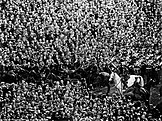
- 1253 – The Japanese monk Nichiren declared the mantra Namu Myōhō Renge Kyō, now a central part of Nichiren Buddhism.
- 1789 – Fletcher Christian, the acting lieutenant on board the Royal Navy ship Bounty, led a mutiny against the commander William Bligh in the South Pacific.
- 1923 – The FA Cup final (crowd and police pictured) between Bolton Wanderers and West Ham United was held on the opening day of the Empire Stadium in London.
- 1945 – World War II: Benito Mussolini, the deposed fascist dictator of Italy, was executed by partisans in Giulino.
- 1983 – The West German news magazine Stern published excerpts from the purported diaries of Adolf Hitler, later revealed to be forgeries.
- Bajirao I (d. 1740)
- Jane Cobden (b. 1851)
- Regina Martínez Pérez (d. 2012)
Selected quote
It is of the nature of desire not to be satisfied, and most men live only for the gratification of it.
— Aristotle, 4th-century Greek philosopher
Related portals
More Did you know...
- ... that the Japanese aircraft carrier Amagi (wreck pictured) capsized on 29 July 1945 as a result of cumulative damage inflicted by American airstrikes on 24 and 28 July?
- ... that Scandinavian influence in Scotland, still evident today, was probably at its height during the time of Thorfinn the Mighty?
- ... that, after the 2003 invasion of Iraq, the Bassetki statue, which is more than 4,200 years old, was found in a cesspool?
- ... that in medieval art, angels were often depicted wearing feather tights?
- ... that 49% of German military losses happened in the last 10 months of the Second World War in Europe?
- ... that Joshua L. Goldberg, the first rabbi to serve as a World War II U.S. navy chaplain, was a Russian army deserter?
- ... that Richard Nixon chose the Wilson desk as his Oval Office desk because he believed it was used by Woodrow Wilson, informed that it was used by Henry Wilson, Vice President under Ulysses S. Grant, but actually bought by Garret Augustus Hobart, 24th Vice President of the United States under President William McKinley?
- ... that some of the nominally silver Roman coins from the Bredon Hill Hoard only have a 1% silver content?
Topics
Categories

History • By period • By region • By topic • By ethnic group • Historiography • Archaeology • Books • Maps • Images • Magazines • Organizations • Fictional • Museums • Pseudohistory • Stubs • Timelines • Chronology • People • Wikipedia historians
WikiProjects
![]() WikiProject History •
Ancient Near East • Australian History • Classical Greece and Rome • Dacia • Former countries • History of Canada • Chinese history • European history • Heraldry and vexillology • Indian history • Jewish history • Medieval Scotland • Mesoamerica • Military history • Middle Ages • History of Science
WikiProject History •
Ancient Near East • Australian History • Classical Greece and Rome • Dacia • Former countries • History of Canada • Chinese history • European history • Heraldry and vexillology • Indian history • Jewish history • Medieval Scotland • Mesoamerica • Military history • Middle Ages • History of Science
WikiProject Time • Days of the Year • Years
WikiProject Biography • Composers • Political figures • Saints • United States Presidents
Things you can do
 |
Here are some tasks awaiting attention:
|
Associated Wikimedia
The following Wikimedia Foundation sister projects provide more on this subject:
-
Commons
Free media repository -
Wikibooks
Free textbooks and manuals -
Wikidata
Free knowledge base -
Wikinews
Free-content news -
Wikiquote
Collection of quotations -
Wikisource
Free-content library -
Wikiversity
Free learning tools -
Wiktionary
Dictionary and thesaurus



